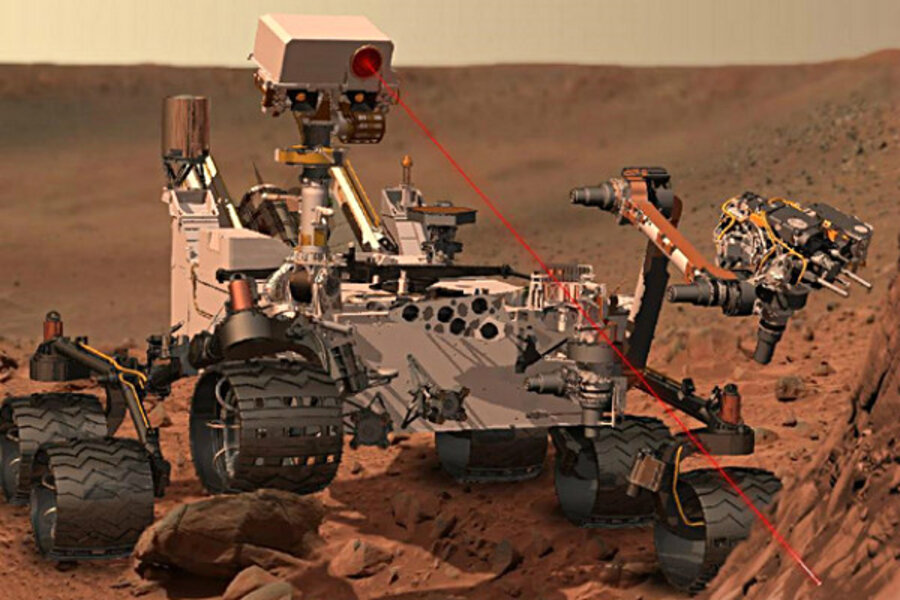Why we keep going back to Mars
Loading...
The huge NASA rover speeding toward an Aug. 5 landing on Mars may be the most capable and complex Red Planet explorer ever launched, but it's far from the first.
The 1-ton Curiosity rover — which will search for evidence that Mars is, or ever was, capable of supporting microbial life — represents humanity's 40th effort to explore the Red Planet over the last half-century.
The huge number of attempted Mars missions may seem surprising, especially since many of our solar system's other planets and moons remain relatively unstudied. But the Red Planet keeps calling us back — and for good reason, experts say.
"Mars is such a compelling scientific target," said Scott Hubbard of Stanford University, the former "Mars Czar" who restructured NASA's Red Planet program after it suffered several high-profile failures in the late 1990s.
"You can get to it every 26 months, and it's the place in the solar system most likely to have had life emerge," Hubbard told SPACE.com. "If you add that to Mars being also the most logical ultimate target for human exploration, I think that Mars will continue to be part of the space exploration portfolio." [7 Biggest Mysteries of Mars]
Fifty years of Mars exploration
The Mars exploration era began in October 1960, when the Soviet Union launched two probes four days apart. The spacecraft, known in the West as Marsnik 1 and Marsnik 2, were designed to perform flybys of the Red Planet, but neither even reached Earth orbit.
The United States got in the game in 1964, launching the Mariner 3 spacecraft on an intended Mars flyby. The mission failed, but Mariner 4 succeeded, cruising past the Red Planet in July 1965 and sending 21 photos back to Earth.
The nation built on that accomplishment, sending a series of orbiters, landers and rovers to Mars over the following five decades.
Notable NASA successes include the Viking 1 and Viking 2 missions, which sent orbiters and landers toward the Red Planet in 1975; the Spirit and Opportunity rovers, which landed in January 2004; the Mars Reconnaissance Orbiter, which arrived at the Red Planet in 2006; and the Phoenix lander, which discovered subsurface water ice in 2008.
But failure remains a regular part of Mars exploration. NASA setbacks include the Mars Polar Lander and Mars Climate Orbiter, two missions that were lost upon arrival at the Red Planet in late 1999. And none of the 19 Mars efforts the Soviet Union/Russia has launched over the years achieved its goals in full.
Overall, the success rate for Mars missions is south of 50 percent.
"Mars wins most of the time," Doug McCuistion, director of NASA's Mars Exploration Program, told reporters earlier this month. [History of Robotic Mars Missions (Infographic)]
Too interesting to ignore
Scientists are deeply interested in Mars partly because of its perceived past potential to host life as we know it. The Red Planet is cold, dry and desolate today, but Spirit and Opportunity have found plenty of evidence that it was once far warmer and wetter.
"When you look at geology, atmospheres, chemistry, and so forth and rack up your reasons to explore, anything that has to do with the possible origins of life on another world is always the first among equals," Hubbard said. "It's such a fundamental question. It goes to this 'Are we alone?' uber-question, or super-question."
Mars is not the only solar system body that may have been capable of supporting life at some point. For example, organisms might thrive today in the subsurface oceans of Jupiter's moon Europa and Saturn's moon Enceladus, some scientists say.
But these two ice-covered bodies are much farther away from Earth than Mars is, meaning they'd be much more difficult — and expensive — to reach. So the Red Planet's proximity is another big reason why so many spacecraft have visited it over the years. (Planetary alignments make Mars missions feasible every 26 months, and a probe can get there in eight months or less.)
Mars' status as a prime target for future human colonization also helps drive more robotic missions to the Red Planet, Hubbard said. After all, a thorough understanding of the planet — including whether or not it ever hosted life — is necessary before sending astronauts there.
"If Mars already has life, you have to understand the effects on humans," McCuistion said in April. "So this is a critical question — not just the innate human question of 'Are we alone?' but also safety of humans on the surface of the planet."
Finally, NASA's long history at Mars has built up momentum that helps push future missions along. NASA structures its planetary exploration efforts in stages, Hubbard said. Flybys come first, followed by orbiters, then landers and/or rovers. A sample-return mission is the last step in this robotic chain.
"We are now at the phase of Mars exploration where, as the National Academies have said, we're ready to do a sample return," Hubbard said.
By contrast, "we are just now getting to the point of doing a flyby of our poor little dwarf planet Pluto," he added, referring to NASA's New Horizons mission, which is slated to cruise past Pluto in July 2015.
Follow SPACE.com senior writer Mike Wall on Twitter @michaeldwall or SPACE.com @Spacedotcom. We're also onFacebook and Google+.
- The Best (And Worst) Mars Landings in History
- Mars Rover Curiosity: Mars Science Lab Coverage
- Mars Explored: Landers and Rovers Since 1971 (Infographic)
Copyright 2012 SPACE.com, a TechMediaNetwork company. All rights reserved. This material may not be published, broadcast, rewritten or redistributed.





